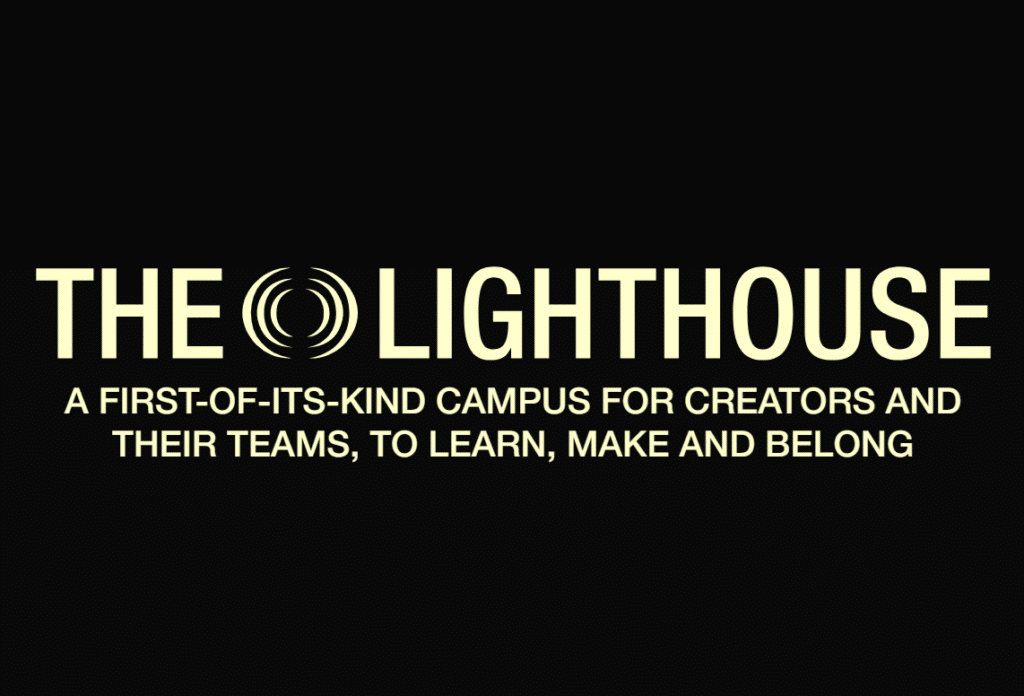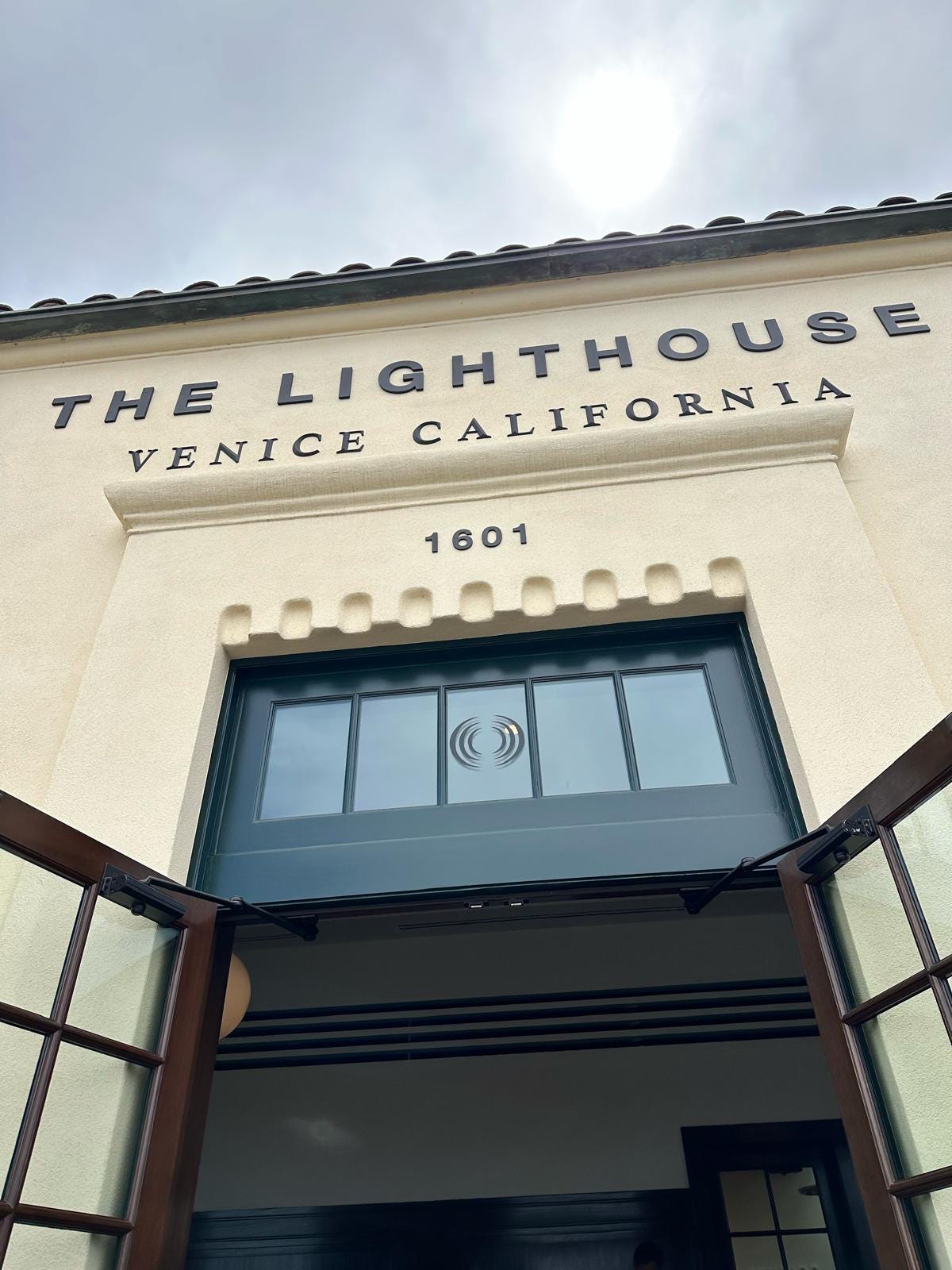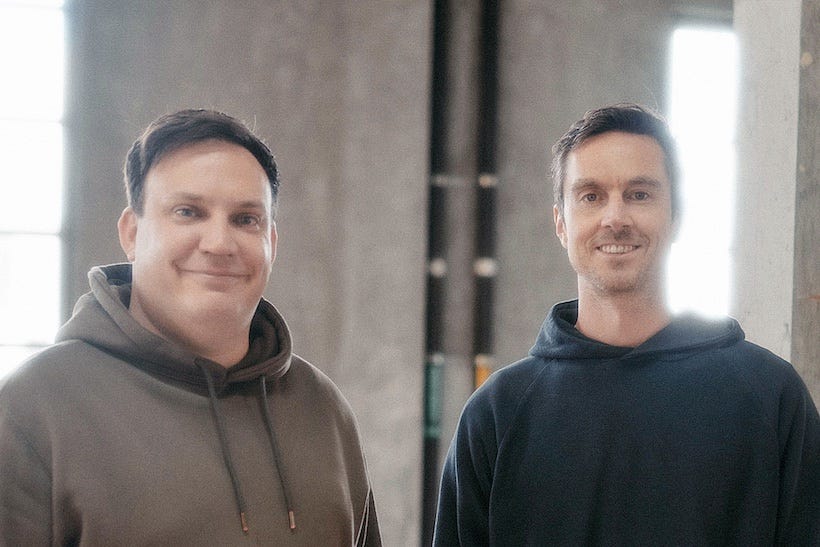There’s a 100% chance you know who Will Smith is.
If you’re a creator, there’s maybe a 50% chance you’ve heard of The Lighthouse.
If you’re from legacy media, 20%—if I’m being generous.
And that delta? That’s the story.
Because Will Smith—Hollywood royalty, Oscar-winner, global box-office juggernaut—just dropped his new album at The Lighthouse. Not on Fallon. Not on the Grammys.
At a creator campus in a converted post office in Venice.
And here’s why that’s not just cool—it’s critical.
Will has always been legacy and digital. One of the first major stars to treat social like a first-class medium. He didn’t just post—he produced.
Short-form, cinematic, sticky content everywhere he went. Localized love letters to every country he touched. He was building global audience connection when most actors were still wondering if they needed a Facebook page.
Meanwhile, his wife Jada was out here launching Red Table Talk—a multi-generational YouTube series that wasn’t just a hit, it was a genre-defining cultural moment. Tough conversations, raw storytelling, viral impact.
Together, they launched Westbrook Inc., a digital-first content company for a creator-first world. They weren’t waiting for studios—they were building the infrastructure themselves. Westbrook ran digital on movies like Wonder Woman and, depending on who you believe, booked $100 million in revenue in a peak year on digital alone. Even if that number was hype, they were still ten steps ahead of traditional players.
And now, Will’s still reaching global audiences—but this time, he chose to launch at The Lighthouse.
So… did it work?
Keep reading.
Photo Taken By Richie Schwartz ©
What the F*ck Is The Lighthouse?
Sure, it only launched four months ago. But four months is a lifetime in internet years.
And they’re already crushing.
The Lighthouse: A Creator Campus With a Pulse
Imagine a Bauhaus for the creator economy. Warhol’s Factory meets Soho House meets film school meets startup incubator—with a better snack bar.
That’s The Lighthouse, tucked inside the old 1937 Venice Post Office, a space that once sorted mail and now cultivates digital ambition. It’s 23,000 square feet of creative infrastructure—everything a serious modern storyteller might need. A black-box theater for screenings. Broadcast-ready podcast studios. A streaming suite for gamers. A test kitchen for food creators. Purpose-built spaces for photography, music, video, editing, and whatever hybrid formats come next. Even the courtyard feels like a production set—sun-drenched and built for spontaneous collabs. Naturally, there’s a café, because no good idea ever started without caffeine.
Not a Co-working Space—A Creative Ecosystem
But here’s the twist: it’s not a drop-in co-working space. It’s curated. Membership-based. Intentional. A vetted community of 150 creators so far (soon more will be let in), handpicked by a Creator Council led by none other than Colin and Samir, who now run their own studio and podcast out of the space. It’s not about renting a desk—it’s about entering a system.
Membership runs $5,750 a year. Members can “graduate” after four years, or stay on as mentors. This isn’t just a place to shoot—it’s a pipeline for building a career.
It’s infrastructure with soul. A studio with standards. And a quiet revolution in how the next generation of creators scale.
As old people like to say, this place is dope.
Neil Waller & James Street
Lighthouse: Origin Story
The founders of The Lighthouse, Neil Waller and James Street, also built Whalar Group—a company that feels like a cheat code for the Open Gardens era: creator-led, community-rooted, and platform-agnostic.
Whalar Group skips the legacy marketing stack entirely. Instead, it empowers creators as storytellers, media channels, and strategic partners—fusing talent management, production, and analytics into a single system designed for speed, authenticity, and scale. In a world where attention lives on TikTok, YouTube, and whatever’s next, they’re not just riding the wave—they’re steering it.
With a team of 350+ employees across their businesses they’ve got a creator management arm, a VC arm, a video game arm, an advertising arm, a software arm. And now with The Lighthouse, they’re building infrastructure for the long game.
Their thesis is simple: creators are founders. Creators are brands. Creators are culture. And they need an ecosystem that treats them that way.
The Venice Choice Wasn't Random—It Was a Statement
A key piece of executing that vision is the team they’ve built behind it—led by Jon Goss, who serves as President of The Lighthouse. Jon brings a background in brand development, marketing, and community architecture, having led spaces like NeueHouse and other social-centered creative environments.
At The Lighthouse, he’s helping shape a physical campus designed to support creators and their teams—not just with gear, but with a full ecosystem: state-of-the-art studios, collaborative workspaces, and education programs built around professional growth and creative experimentation. His role grounds the Lighthouse in both vision and execution—a physical embodiment of Whalar Group’s thesis, tuned for community.
But here’s what made me pay attention (and a believer, I’m an investor — full disclosure): they didn’t launch The Lighthouse in Venice by accident.
They surveyed creators across LA before launching, but they picked Venice because this neighborhood sits at the exact friction point between legacy Hollywood and the new creator economy. It’s the front porch of the entertainment industry—and they built the clubhouse right on the edge of that porch.
And not just any building. The Lighthouse took over an old post office that used to be owned by mega-producer Joel Silver. That’s not symbolism—it’s signal. A literal handoff from old-school Hollywood to what’s next.
Bridging Two Worlds: Creators and Hollywood
By being in LA, they aren’t just connecting creators to each other—they’re connecting creators to Hollywood. They see massive arbitrage in tapping into one of the most developed creative systems in the world: writers, directors, editors, designers, and showrunners who’ve spent decades honing their craft within the studio system. That creative infrastructure has always been hard to access for outsiders—but now, it’s being re-routed. They’re bridging two ecosystems that used to operate in parallel and bringing them into conversation.
Marc Benioff and Neal Moritz didn’t just invest in Whalar just because it’s a cool idea. They see the bigger play. One of Silicon Valley’s smartest money guys and one of Hollywood’s most prolific producers are betting on the same thing: that the future of content is open, connected, and creator-powered. (And by the way, Shopify just invested too).
The Global Blueprint: Why It’s Bigger Than Venice
I met Neil Waller a few years ago through a friend, before the Lighthouse even launched. He’s the opposite of Hollywood flash. Humble, grounded, always curious, always building.
When he told me about The Lighthouse, it wasn’t just the LA space—he and James were thinking globally. And if that sounds ambitious, it’s because it is. But these guys are Doers—with a capital D. They’ve already broken ground on the Brooklyn space.
And that Brooklyn Lighthouse? It’s going to feel nothing like Venice. That’s the point. Where Venice is Creator + Hollywood, Brooklyn will be Creator + Artists, Global Culture, Cutting-edge fashion. It’s designed to be hyper-local and radically IRL. Because what makes Lighthouse work isn’t just the tech or the capital—it’s the alchemy of place.
Now imagine a Lighthouse in Miami, pulsing with Latin soul. Or Austin, steeped in outsider music and indie film. Chicago. London. Dubai. Madrid. Each space tapping into its local creative lifeblood—and then connecting to a global network. Imagine a creator from New Delhi showing up at the Mexico City hub. A creator from Rio collaborating with someone they met in Paris. That’s not just co-working. That’s cultural cross-pollination at scale.
Okay, maybe I’m getting ahead of myself. But spend five minutes with Neil and James and suddenly it doesn’t feel far-fetched. It feels inevitable.
Lessons From the Last Generation of Creator Spaces
We’ve Been Here Before. Sort of.
When I was producing a movie a number of years back a manager pitched me an “influencer” trying to cross over into acting. We ended up giving him the role—and somewhere between takes, I found out he was one of the founding members of Maker Studios.
His manager and I started talking about what they were building. As soon as I got back to L.A., I drove straight to their massive Culver City campus. It was a full-on creator playground: sets everywhere, editing bays, costume rooms, gear cages, whiteboards filled with scribbled upload strategies. A kind of organized chaos. Maker was a multi-channel network—remember that term?—with over 60,000 affiliated YouTube channels pushing billions of views a month.
It was 2015. Just down the road from Sony. And yet, Hollywood barely blinked.
The prevailing attitude? This was cheap, disposable content made by people who weren’t good enough for the big leagues. But what I saw were creators who didn’t have to wait for permission. Who could make and publish something that day. Who could test, iterate, and evolve in real time. It was fast. Raw. Unfiltered.
I couldn’t quite figure out how to pivot into that world. The traditional business I was in paid better. It came with prestige. But it also kept me locked inside a narrow system—pitching, waiting, polishing, waiting some more. The hamster wheel.
Not long after, Disney bought Maker for $500 million (I guess someone in Hollywood was paying attention). It was the biggest validation the space had ever seen. But the integration failed. Disney didn’t understand the culture. They couldn’t figure out how to plug the engine into their legacy stack. The whole thing collapsed.
And Maker wasn’t the only one. YouTube tried it too—not just in LA, but with a network of creator spaces around the world. They had momentum for a while, but COVID put a nail in the coffin. Casey Neistat had a smaller, scrappier version in New York with 368. There were others. But none had the intention, systems, or long-game execution of The Lighthouse. Or timing.
Neil and James have impeccable timing.
What the Biggest Creators Already Know
Some of the most successful creators offer a clear example of what it looks like to build beyond content. They didn’t just scale production—they built infrastructure. Physical spaces. Purpose-built studios. Creative ecosystems they fully control.
MrBeast. The Sidemen. Rhett & Link. Zach King.
Creators like these aren’t just making content—they’ve built their own spaces. Purpose-built studios. In-house teams. Full-stack infrastructure designed around their workflow, their brands, their pace.
But they represent the 1%—not because they went viral, but because they translated attention into infrastructure. Most creators don’t have that kind of capital or scale. Yet.
There are plenty of impactful, highly effective creators who haven’t built out massive facilities—either because their business doesn’t require it, or because they’ve chosen to stay lean by design. They’ve built powerful brands, deep community, and smart monetization strategies without ever laying a single brick. Not every creator needs a warehouse to make waves.
The Lighthouse Is the Missing Middle
It’s the missing middle. A bridge between hustle and scale.
For creators who don’t yet have a warehouse or team of 40, The Lighthouse offers what the others couldn’t: real-world infrastructure, top-tier resources, and a support system that feels more like a founder incubator than a content club.
Not just access to gear—but access to people, systems, and strategy.
That’s the difference.
And that’s what makes this time—finally—feel different.
Where Legacy Media Fits In
Let’s bring it back to Will Smith.
If he can generate hundreds of millions of impressions from a 90-minute appearance at the Lighthouse… what happens when a legacy studio or streamer leans all the way in?
Spoiler: they already are.
I can’t share details yet, but trust me—TV shows, films, entire franchises are lining up. Not for red carpet photo ops. Not for influencer posts. For something deeper.
The Next Wave: Capital Meets Platform-Agnostic Creativity
It’s not a power play—it’s just the reality.
The Lighthouse can be the most effective space for creators to create. So if you bring the cast of Severance Season 3 into that environment, you’re not doing a press junket—you’re lighting a fuse. You’re handing creative tools to the people who know how to spark cultural wildfire.
This is where legacy meets the creator economy. Not as rivals, but as partners.
The Lighthouse is the handshake between both worlds—and we’re just starting to see the ways those intersections will play out.
The next massive opportunity?
When serious capital starts flowing into platform-agnostic content—premium, genre-spanning, beautifully produced work that lives everywhere and nowhere at once. That wave is coming. And The Lighthouse is perfectly positioned as the conduit—connecting creators, tech, talent, and financing at the moment they all need each other most.
The ones in Hollywood who understand this, those who are willing to adopt a creator mind set, are going to find fertile ground in the open gardens.








thanks for the correction and will make sure we adjust!
I’d never heard of The Lighthouse before reading this. As a cinematographer who always existed outside of the union/studio system, I never understood why more people with leverage weren’t leaning into permission-less platforms like YouTube to cultivate something big outside of the traditional system.
Granted, I don’t have a full insider’s perspective but I’m curious how models like The Lighthouse will continue to be lean, nimble and of the moment after massive capital starts flowing in.
Great read. Really got the juices flowing!